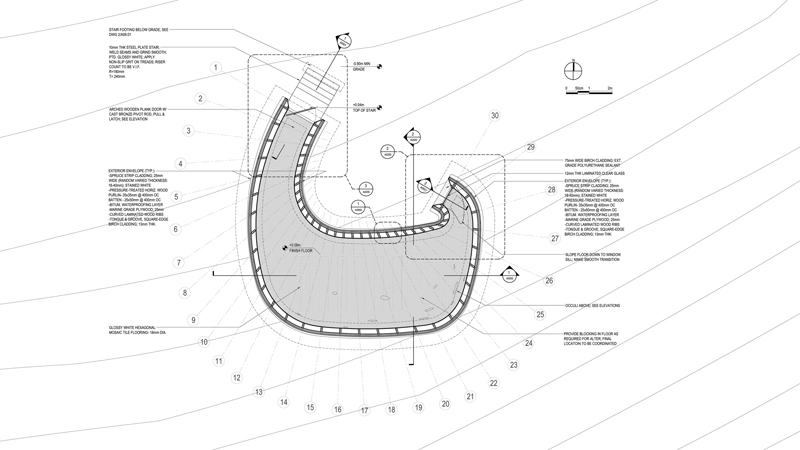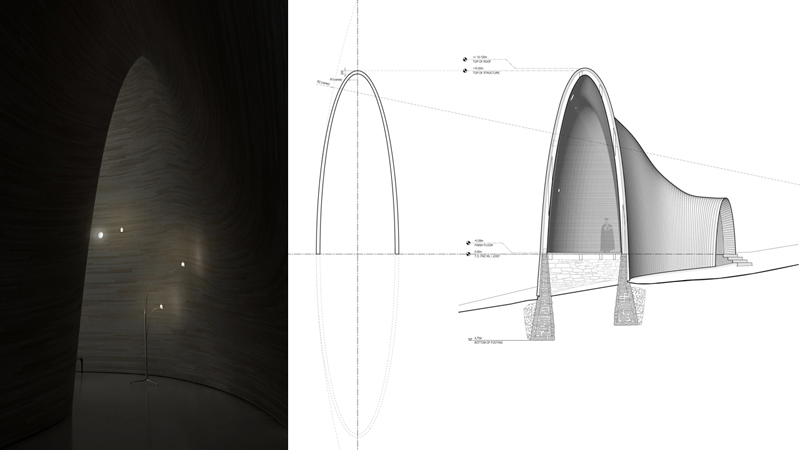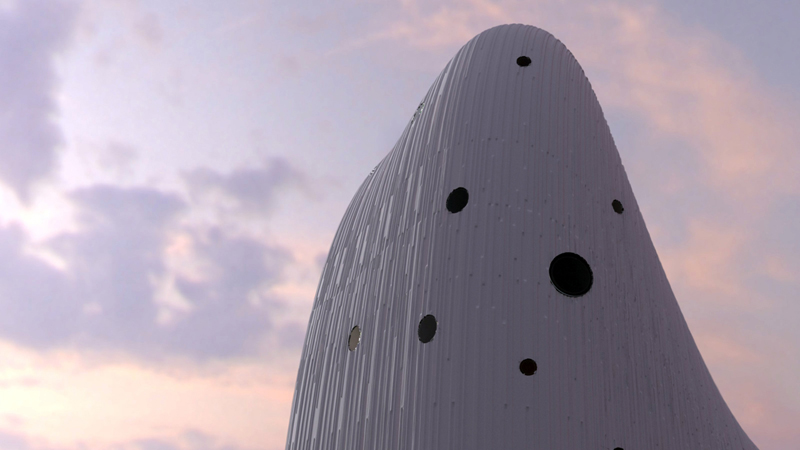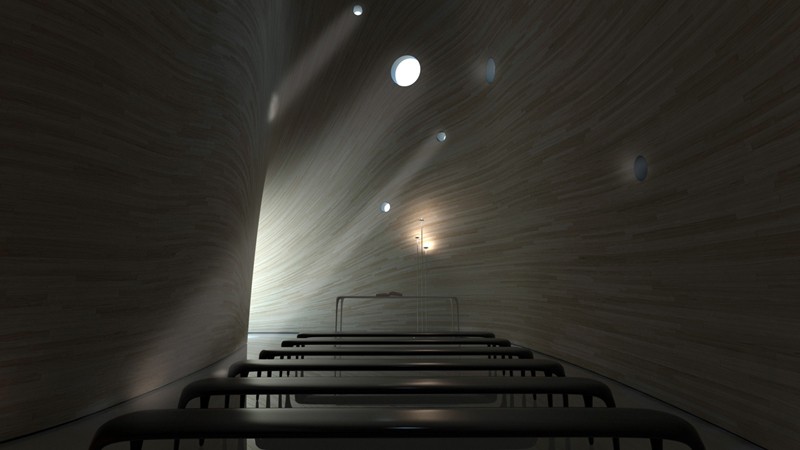| kapolna madaras |
| harghita county, romania |
2009 |
Located on the highest summit of the Harghita Mountains of Transylvania , the Kapolna Madaras is a small pilgrimage chapel open to all, including travelers as well as local villagers. For generations, Szekely Roman Catholics have been making the annual summer trek to Madaras to witness the homage to, and blessing of local saints.
The chapel is a proclamation of dualities, which even in themselves are contained further histories of the human condition, both natural and man-made; it is at once "the cathedral" and "the cave"; temporary and permanent, cultured and primitive. The space allows the ceiling to disappear into the heights, and the eye and mind are drawn upward in ascent. The light filtering in from behind the nave provides a quiet glow, while the small occuli overhead allow precise shafts of light at certain times throughout the day and year. The truncated toroidal form can appear extremely light and billowed, or massive and inert; resembling both a tent and a stone. The textural play of the interior and exterior surfaces serves to reinforce the idea that this small building is a simple continuous manifold; a two-sided sheet of wooden skin that has been primitively formed into a shelter. Less experiential but particularly important, is the reconciliation between digital and parametric design technologies with local materials and construction techniques, primarily the centuries-old woodworking skills of the local carpenters, reflecting the strong sense of craft and culture of the place. |








